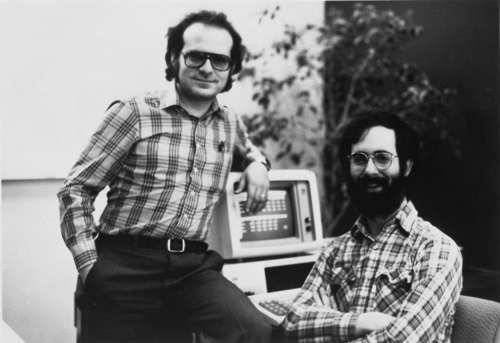
A short history of Microsoft Excel
Early beginnings
It is always interesting looking into the history of computers and computer programs. Today’s users, even those over 50, are often surprised at how long some applications have actually been in existence. There were very few home users of the predecessor of Excel, Microsoft’s Multiplan. This has its origins in 1982, although spreadsheet products date back to 1978. This first spreadsheet program was called VisiCalc. Microsoft brought in R1C1 addressing to replace the A1 addressing of VisiCalc. Multiplan worked on CP/M systems; however with the advent of MS-DOS, Lotus 1-2-3 became the favoured spreadsheet product.
Have you heard of Dan Bricklin and Bob Frankston?
These names may have passed you by, but they were the Harvard students who developed VisiCalc. Bob Frankston was instrumental in making the program faster and giving it more capability. They sold over one million copies. It is still possible to see the original program and how it worked. For more history of spreadsheets see: https://history-computer.com/ModernComputer/Software/Visicalc.html .
What were the purposes of electronic spreadsheets?
The idea was an electronic blackboard with electronic chalk. Capability was being able to manipulate 5 columns and 20 rows. Only basic calculations were possible to start with, but the rudimentary program led to the development of the flexible Excel program which we still use today.
It is now possible to convert PDF to Excel. An easy to use conversion program can be found at: https://pdftables.com/convert-pdf-to-excel. However, let us return to the potted history of electronic spreadsheets.
Early versions
Version 1.0 was released in 1985. It had graphics and drop-down menus and the functionality of pointing and clicking with a mouse. This version was only available for Macintosh. Version 2.0 followed two years later, and was the first Windows version. It was version 5 in 1993 which included multiple sheets for the first time. Version 3.0 made a major breakthrough with the introduction of drawing capabilities and charts.
Excel today
Greater functionality rapidly followed in the mid to late 1990s and 2000s with versions 7, 8, 9, 10 and 11. There was no version 6, as at this stage Microsoft wanted to be consistent with the names of all its office programs. However, from version 7 onwards, the programs were also known as 95, 97, 2000 and XP. The latest release was in 2013 with more than 50 new functions.

Leave a reply